Tomato growing in self-watering buckets was a necessary move for me as Australia was in the grip of one of the worst droughts ever. It was a way of conserving water and worked very well.
I bought the seedlings from our local garden centre and planted them in a 20 litre self-watering bucket. I needed more tomatoes so the next time I planted tomatoes it was in a 60 litre plastic bin.
When planting tomatoes it is wise to plant them deeper than it was in the nursery pot. This will help build a stronger root system to support and produce a large crop.
In the larger bin 2 plants were planted and this proved to be more productive for a given area. The larger self-watering bins were also DIY constructed by me. The details will be added to the post for the smaller ones soon.
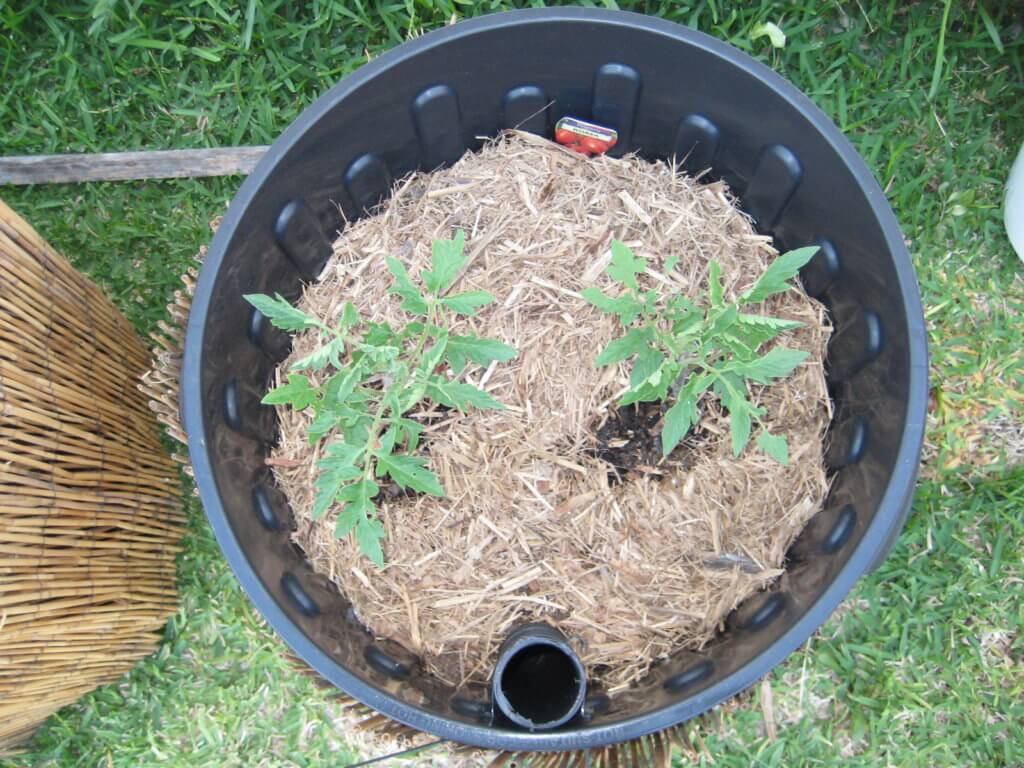

The tomatoes pictured above are growing rapidly as they are growing in ideal conditions. It has taken 8 days to double in size as shown on the right. I have been using sugar cane mulch to help conserve moisture and to maintain a dry area under the canopy to reduce risk of disease caused by humidity.
The plants are watered about once a week and that changes to more frequent as they get bigger and the weather warms up. There are a few diseases that are worth reading about so that you are aware of what to look out for.
Fortunately I did not have any diseases problems and feel sure that having the right potting mix combined with slow release fertilizer did the trick.
Having a constant supply of water also ensures the plant can maintain a good growth rate without the fruit splitting from inconsistent watering.
The other very important factor is never water overhead. Always always only water the roots.
Potting Mix Used In Self-Watering Buckets
It is advisable to only use a premium potting mix that has slow release fertilizer. Afterall you are expecting to harvest some good tomatoes.
If you visit the potting mix post, you will see what I did to make sure my plants got what they needed.
Tomatoes prefer a slightly acid to neutral soil ph. If you intend to plant in garden soil, there are methods of determining the ph. It is well worth the time and effort to make sure that your plants have the best chance to produce to their maximum.
Chemical Free Insect Pest Control
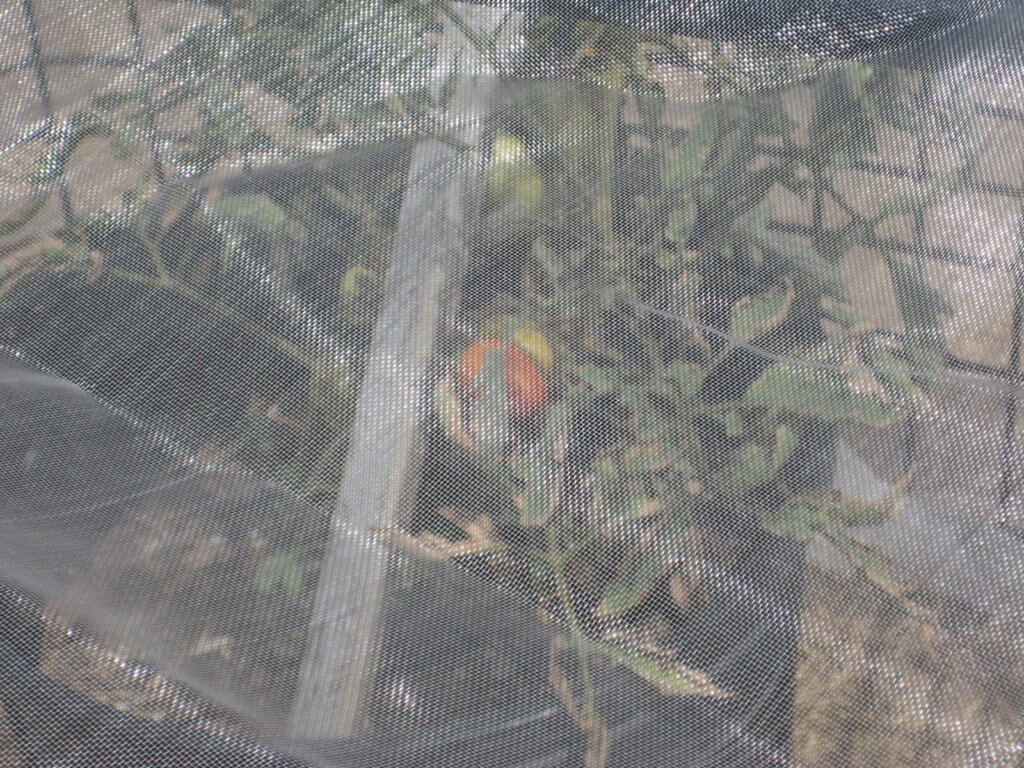
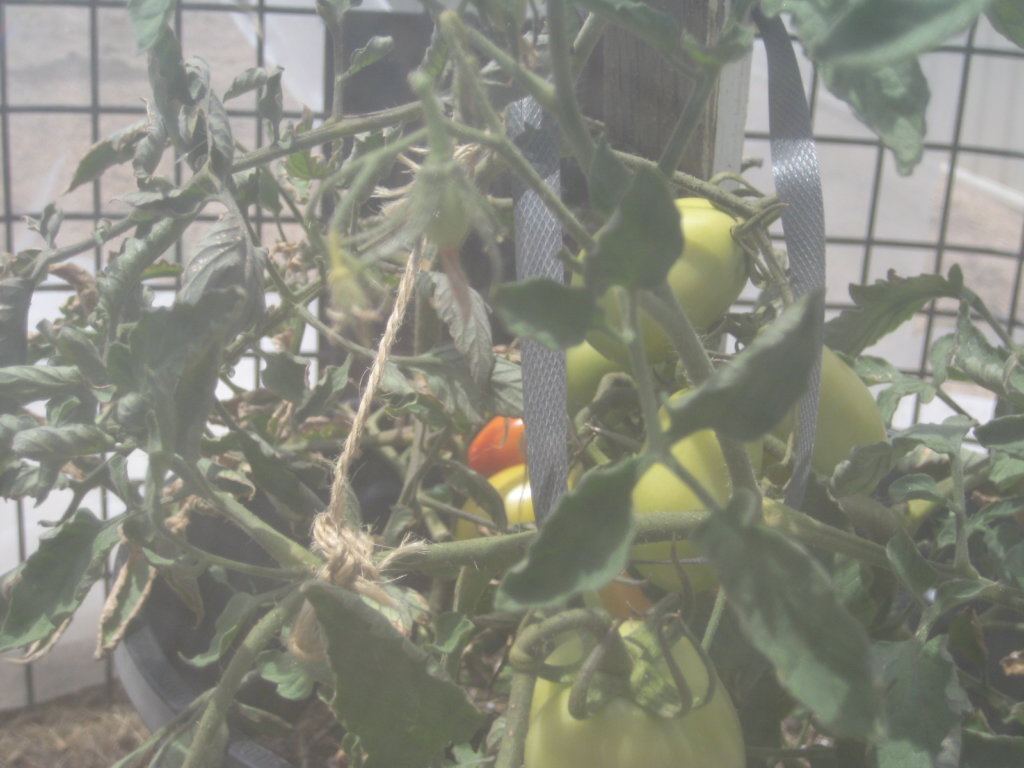
In Australia we have a pest called the fruit fly. This little pest is responsible for millions of dollars damage to the fruit industry. There are a few ways to control it. Some use chemicals which is not good for us.
I use an exclusion netting and start covering the fruit before they start to ripen. This prevents the fruit fly from laying its eggs in the tomato. These eggs hatch and then the little maggots munch on the fruit and it begins to rot.
the first image on the right shows a closer view of the netting. A very fine weave is needed to keep them out.
Tomato growing in self-watering buckets worked out very well. I have been doing this for a few years now.
The Tomato Harvest
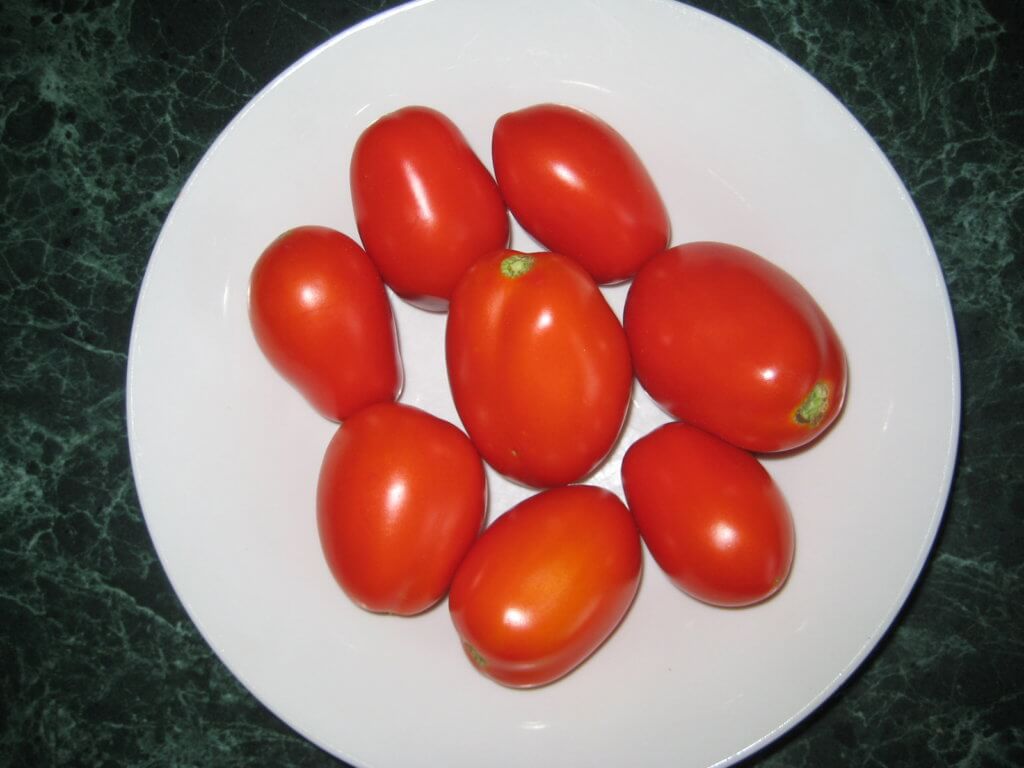
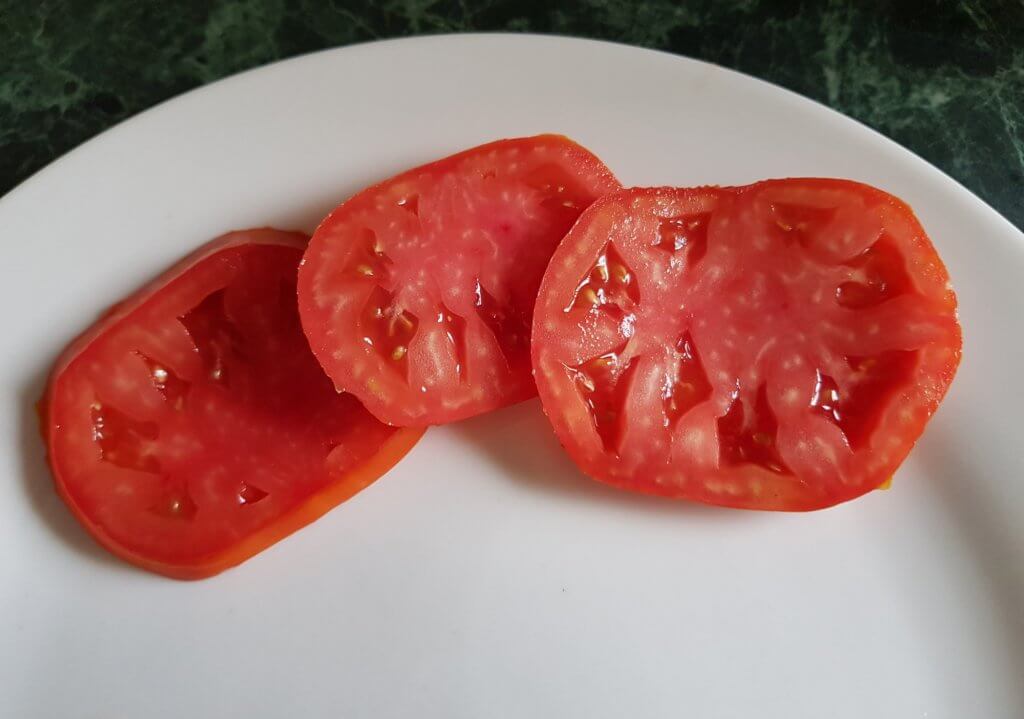
This is what we strive to achieve. A beautiful tasting home grown tomato. This will complement any meal cooked or raw. Nothing beats the taste of home grown.
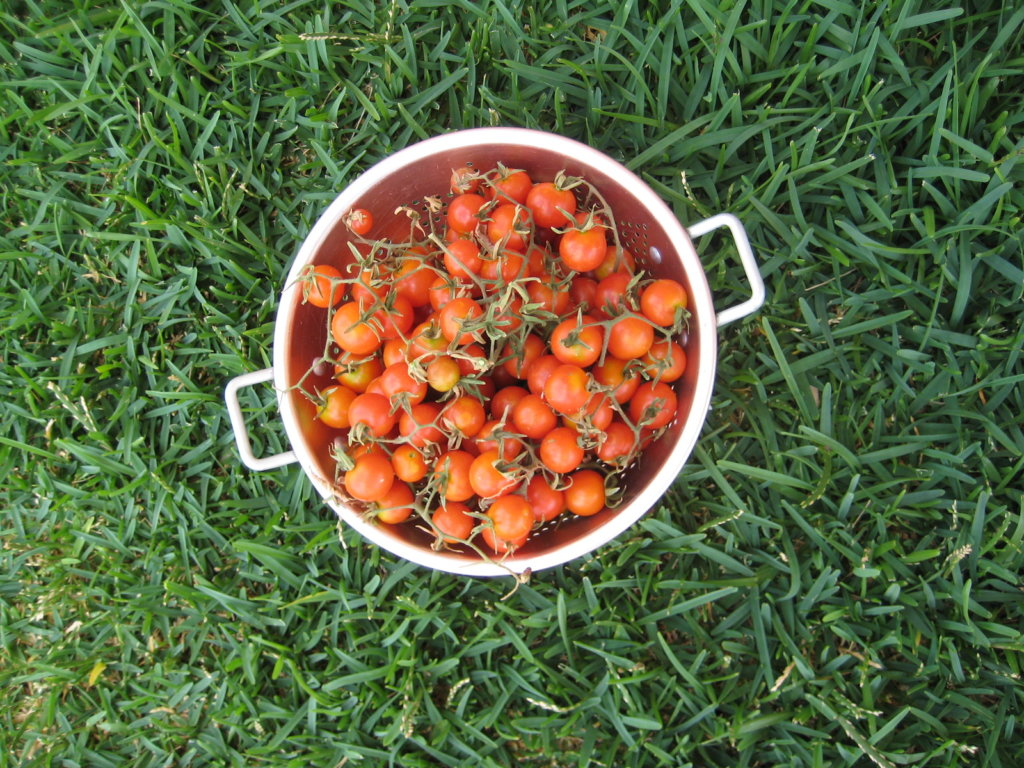
I also grew some cherry tomatoes. They were grown the exact same way of the larger tomatoes. i am equally happy with that harvest. It goes to show that you can pretty much grow anything in a bucket.
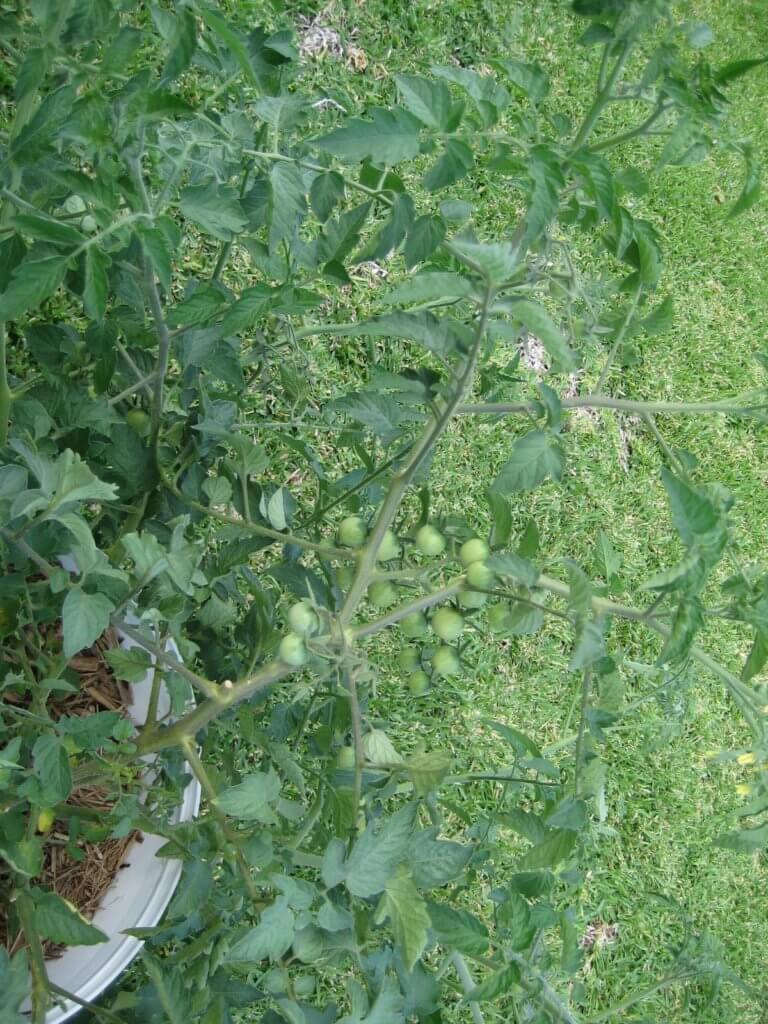
Cherry tomatoes grown in a 20 litre [5 gallon] self-watering bucket. They also had exclusion netting around just before ripening.
